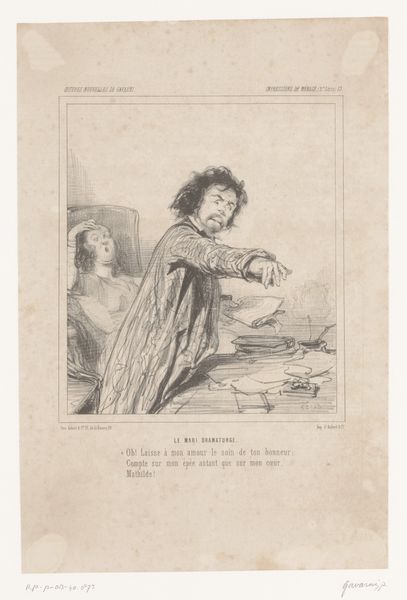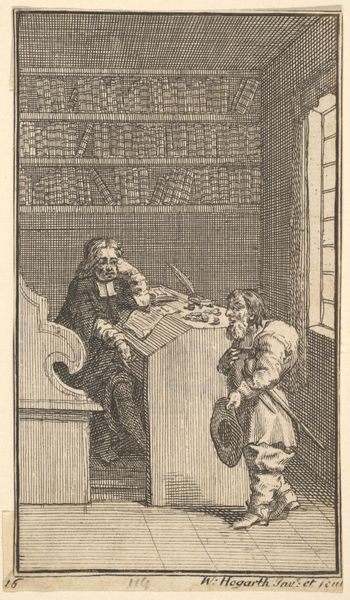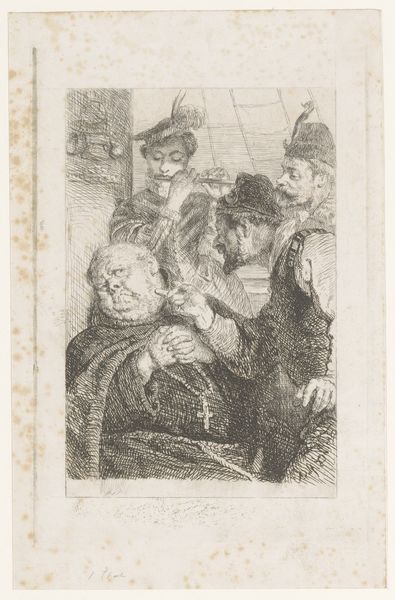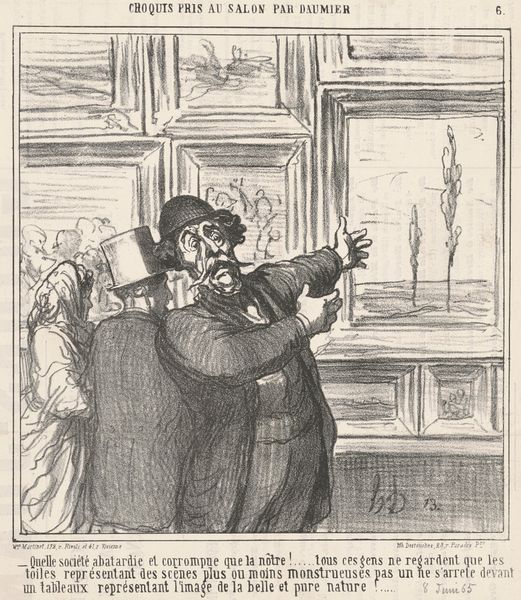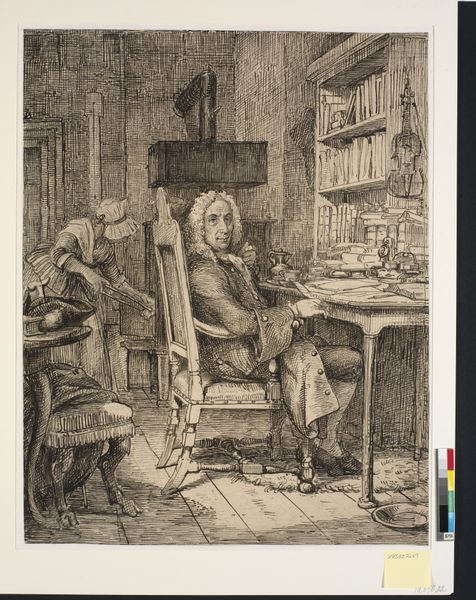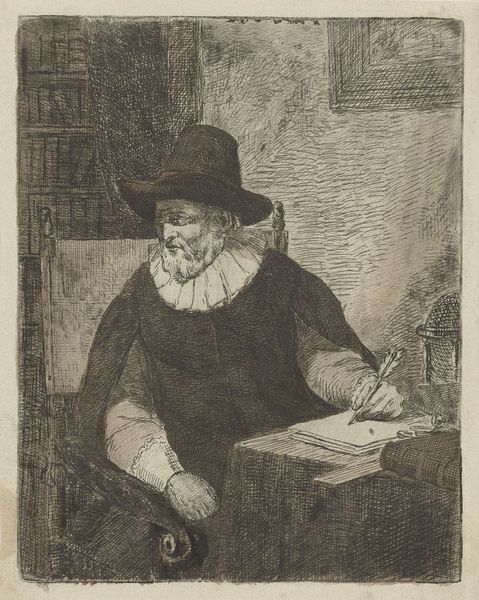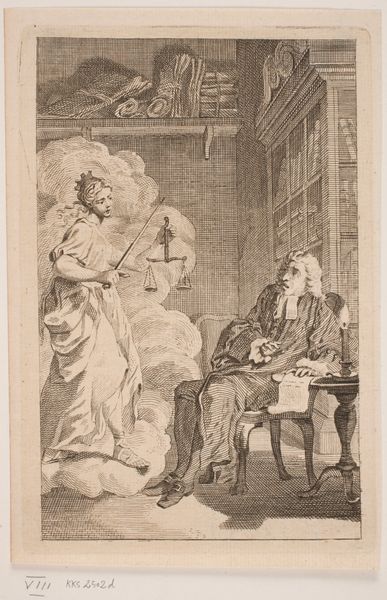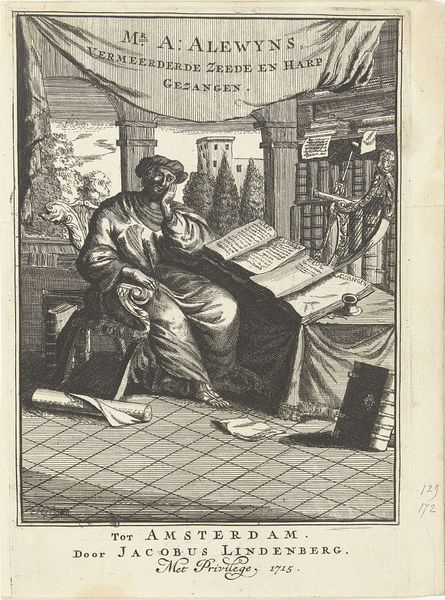
drawing, paper, ink
#
drawing
#
caricature
#
paper
#
ink
#
genre-painting
Dimensions: height 210 mm, width 168 mm
Copyright: Rijks Museum: Open Domain
Curator: Let's consider this drawing from between 1900 and 1935, entitled "Ministers De Visser en Simon de Vries als de belastingontvangers". It’s rendered in ink on paper. My immediate reaction is that it's a rather harsh depiction, a bit grotesque even, with these exaggerated facial features. Editor: Absolutely. The caricature leans into an almost medieval aesthetic with its stark contrast and seemingly rudimentary execution, although on closer examination the layering and mark-making appear quite skillful. Tell me more about this artist and historical context. Curator: Well, it's marked "after Marinus van Romerswael" indicating a copy or inspired-by work. Romerswael was a 16th-century painter known for similar scenes of tax collectors that contained social critique. This version cleverly invokes an older style to critique politicians—presumably those named, during the early 20th century. The phrase at the bottom translates to “The Misers". Editor: Yes, the explicit connection with older miserly archetypes immediately raises questions of socio-political commentary. Who were these ministers, what were their policies, and how did this imagery function within contemporary Dutch society? Also note how the piles of coins in the foreground form a stark contrast to the "150 G. SCHOT VOOR ONDERWYS" (roughly, “150 Guilders for education budget”) scrawled in their ledger—highlighting issues of budgetary disparity. Curator: Precisely. The composition draws heavily from the Renaissance miser archetype, but in many ways simplifies Romerswael’s original compositions. It uses the harsh line work to bring us into that world but flattens and darkens some areas while creating high value contrast with small highlights throughout the piece. The caricature, the detail, creates a focal point on their calculating facial expressions and heavy wigs. Editor: Indeed. I appreciate your pointing out this push-pull relationship in style: it’s both timeless and profoundly immediate, which certainly suggests targeted socio-political dissatisfaction regarding education funding and other budget allocations at the time. The looming, moustachioed figure in the background definitely amplifies this. It makes you think about how images shape public sentiment. Curator: The choice of medium—ink on paper—enhances that, lends it the immediacy and flexibility that you wouldn't find in painting perhaps. It becomes a tool, more accessible to those of us interested in questioning the structures, strictures and intentions around this work. Editor: This piece reminds us of the power of caricature, how it reflects contemporary discourse and, really, what incites societal indignation.
Comments
No comments
Be the first to comment and join the conversation on the ultimate creative platform.

